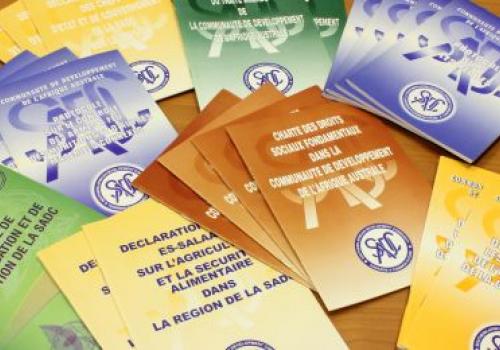The overall aim of the Southern African Development Community (SADC) is to achieve Regional Integration and Eradicate Poverty within the Southern African region. To achieve these goals, Member States need to work together harmoniously in achieving effective results on common problems and issues. In order to enable this kind relationship, several legal and institutional instruments have been put into place to guide and standardise the work of SADC with Member States. One of these instruments is the SADC Protocols, which enshrine the aims of the Community by providing codes of procedure and practise on various issues, as agreed by Member States.
A Protocol is a legally binding document committing Member States to the objectives and specific procedures stated within it. In order for a Protocol to enter in to force, two thirds of the Member States need to ratify or sign the agreement, giving formal consent and making the document officially valid. Any Member State that had not initially become party to a Protocol can accede to it at a later stage.
For an amendment to be made to a Protocol any Member State may propose the amendment to the Executive Secretary of SADC for preliminary consideration by Council after all Member States have been notified. The amendment to this Protocol can then be adopted by a decision of three quarters of the Member States of SADC.
A provision for any disputes arising from the application or interpretation of a Protocol is made by referring grievances to the SADC Tribunal if they cannot be resolved amicably through regular diplomatic channels.
Currently, SADC has 26 Protocols, including those have not yet entered into force. To see a list of all SADC Protocols, and access the individual documents, please refer to the Protocols section of the Documents Menu.

